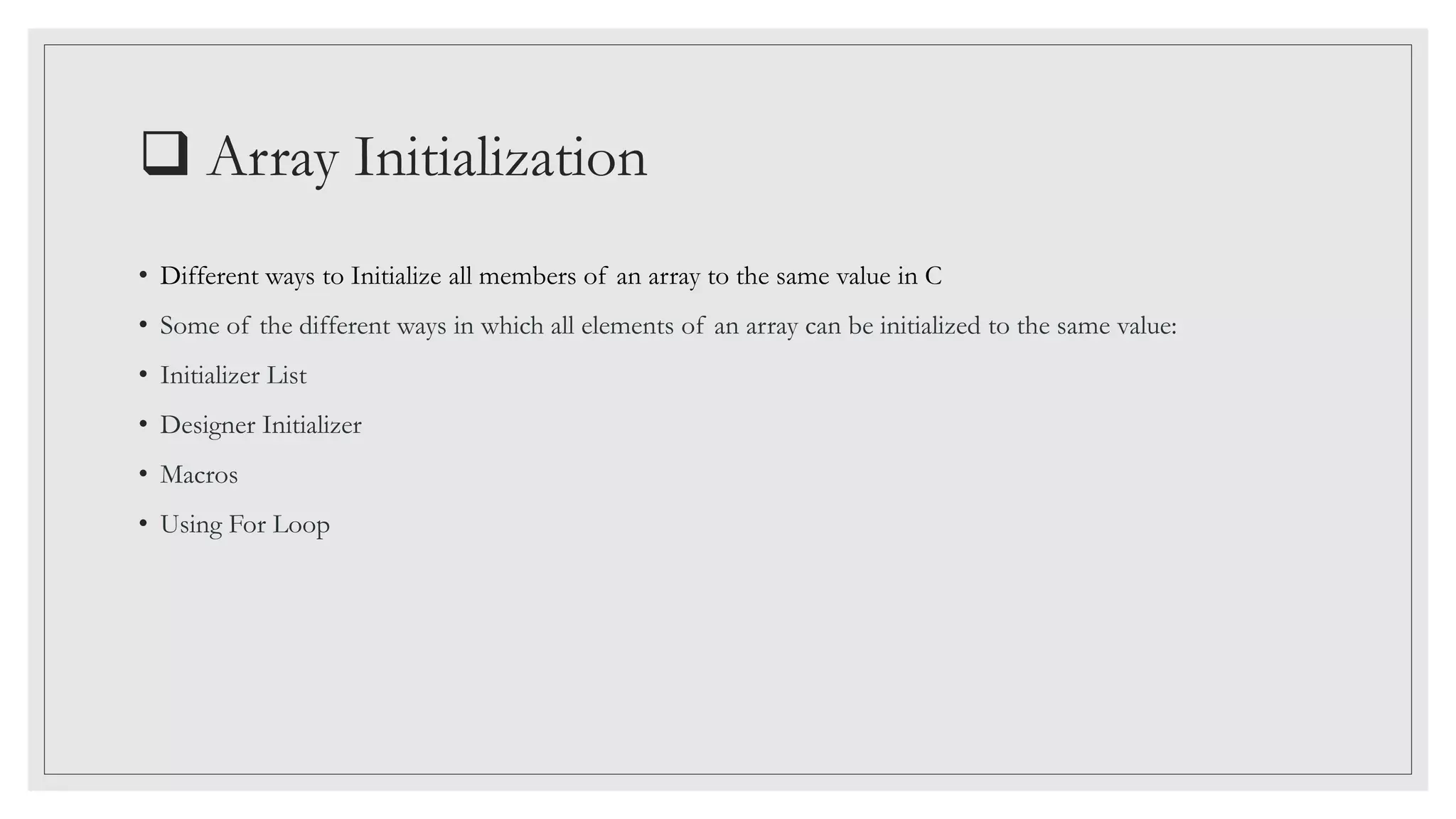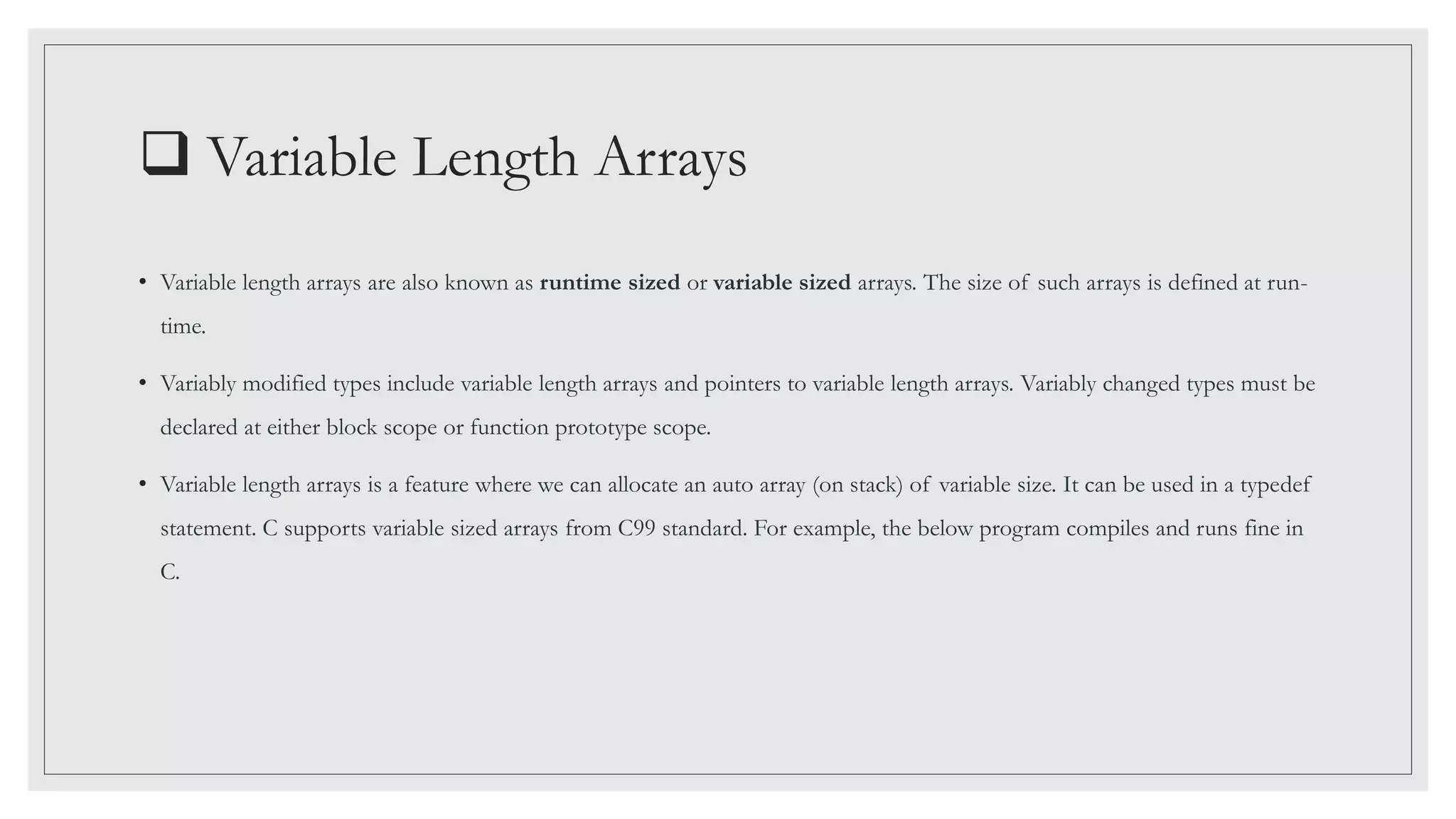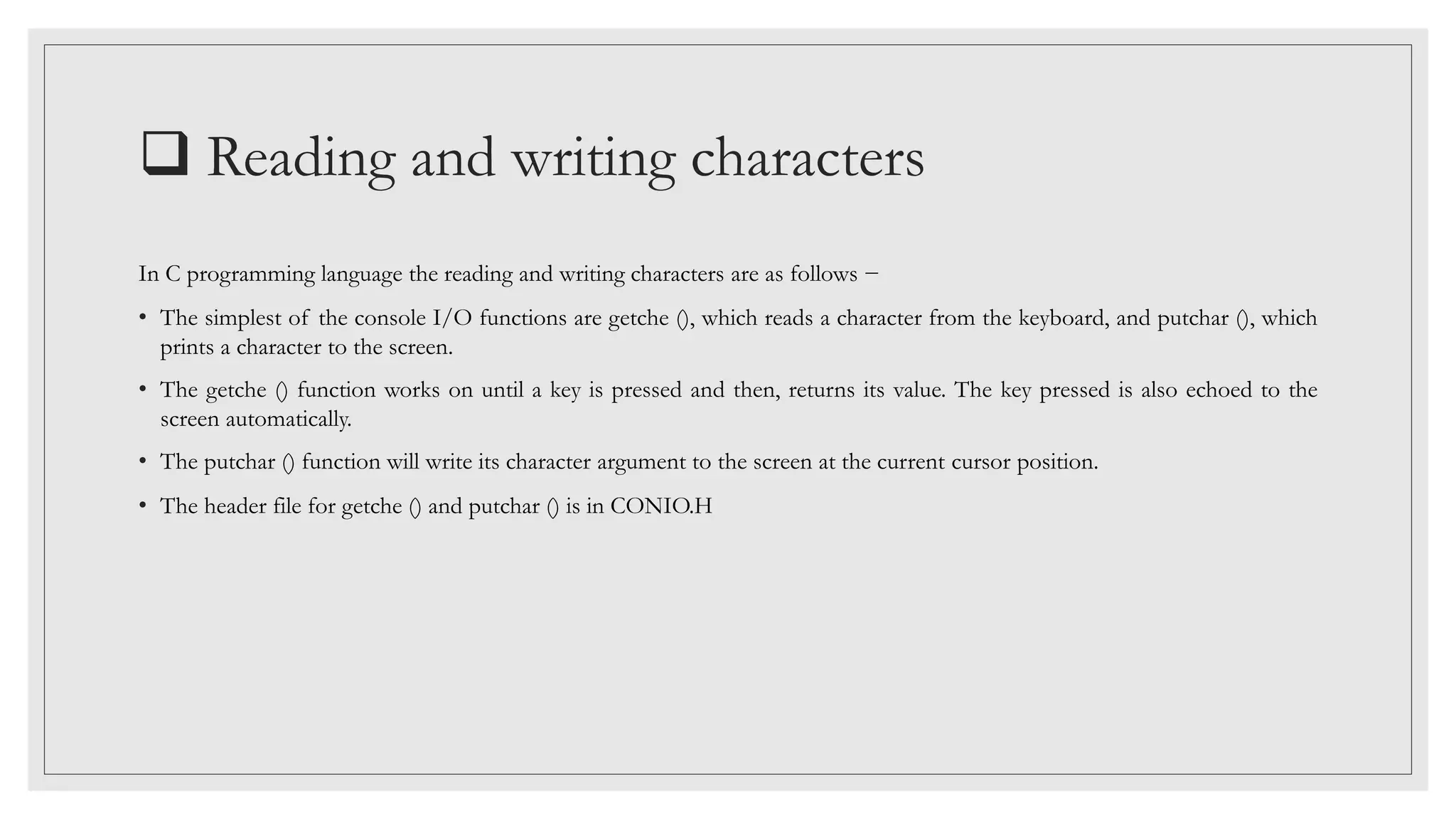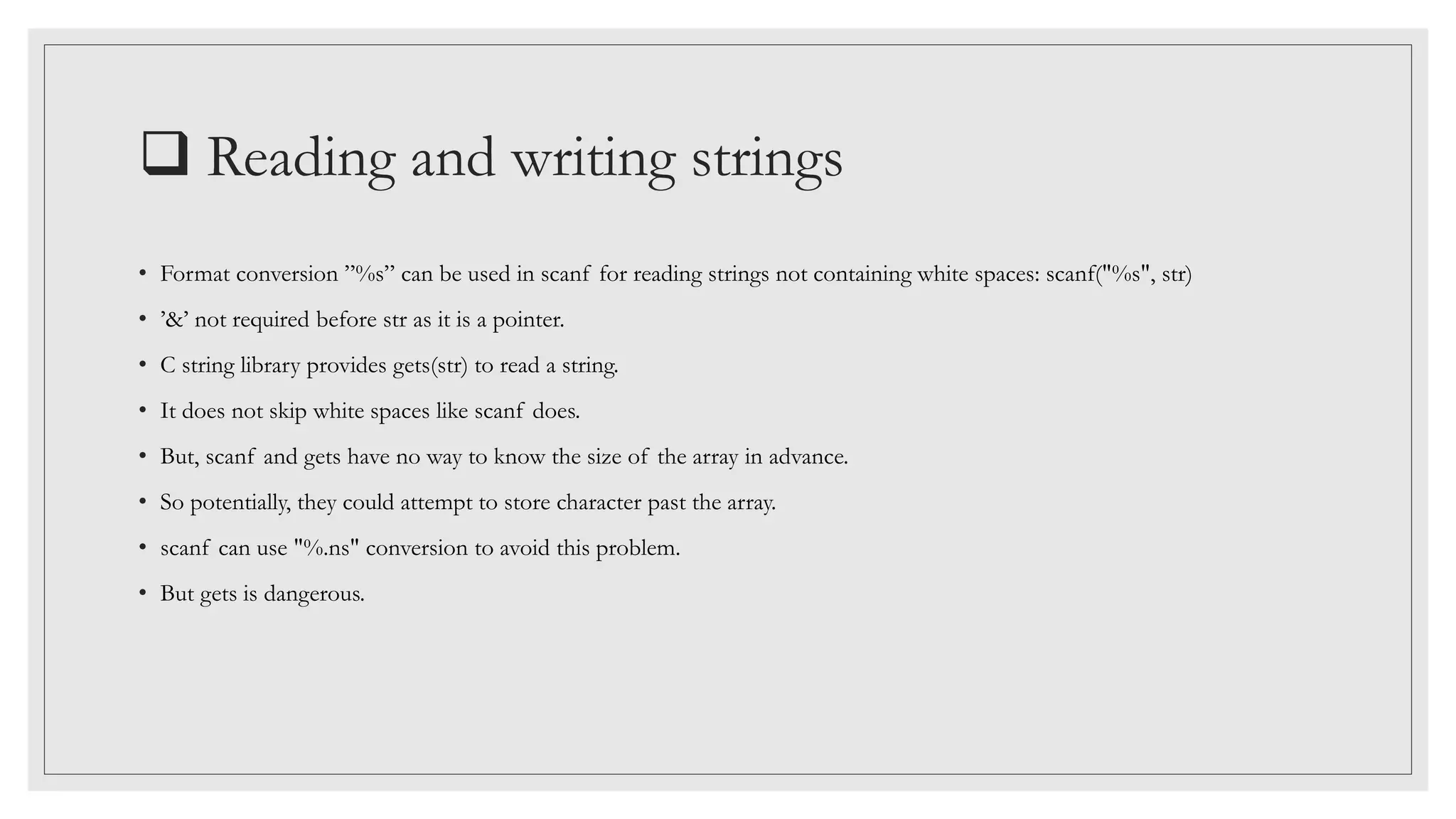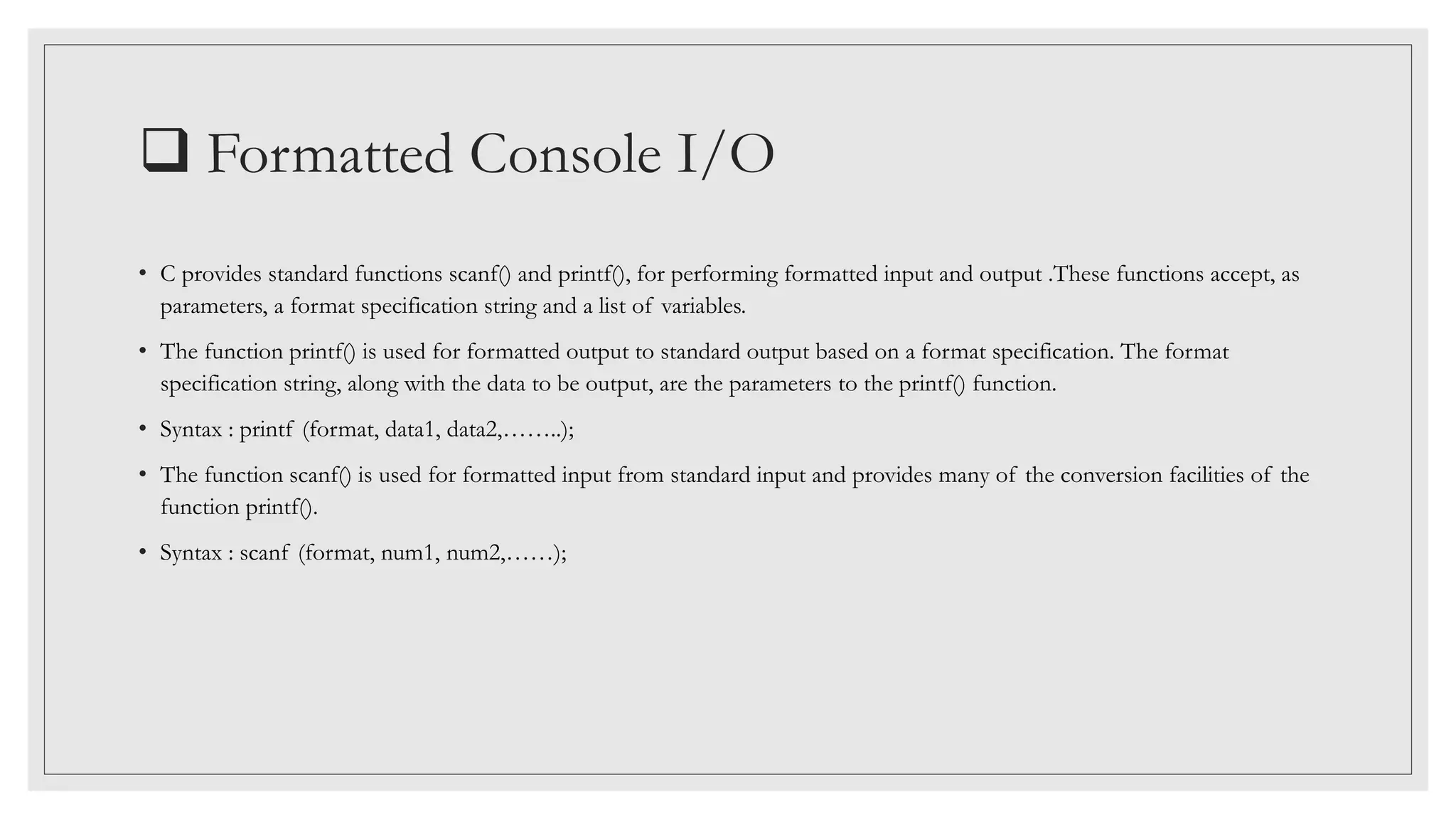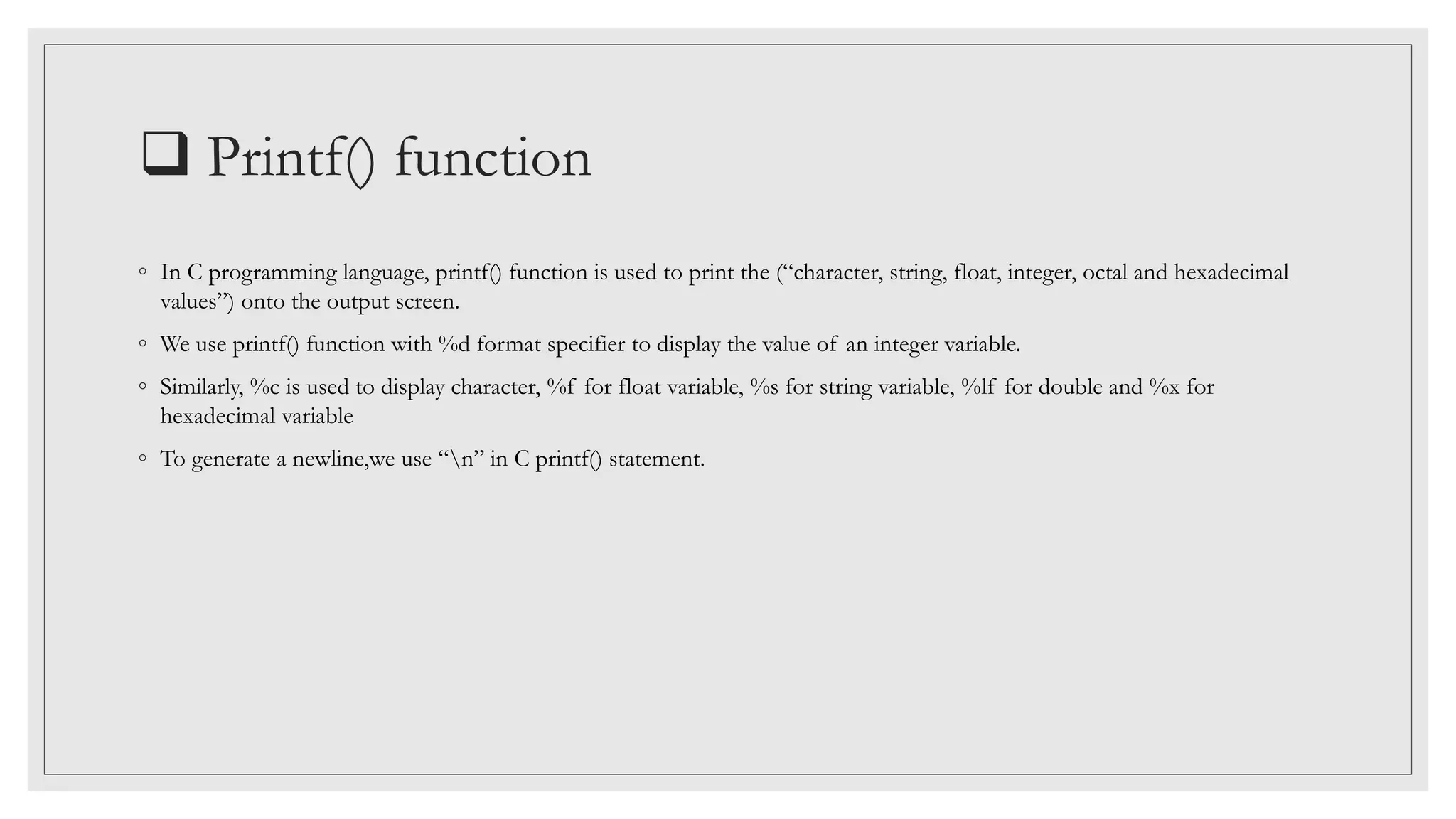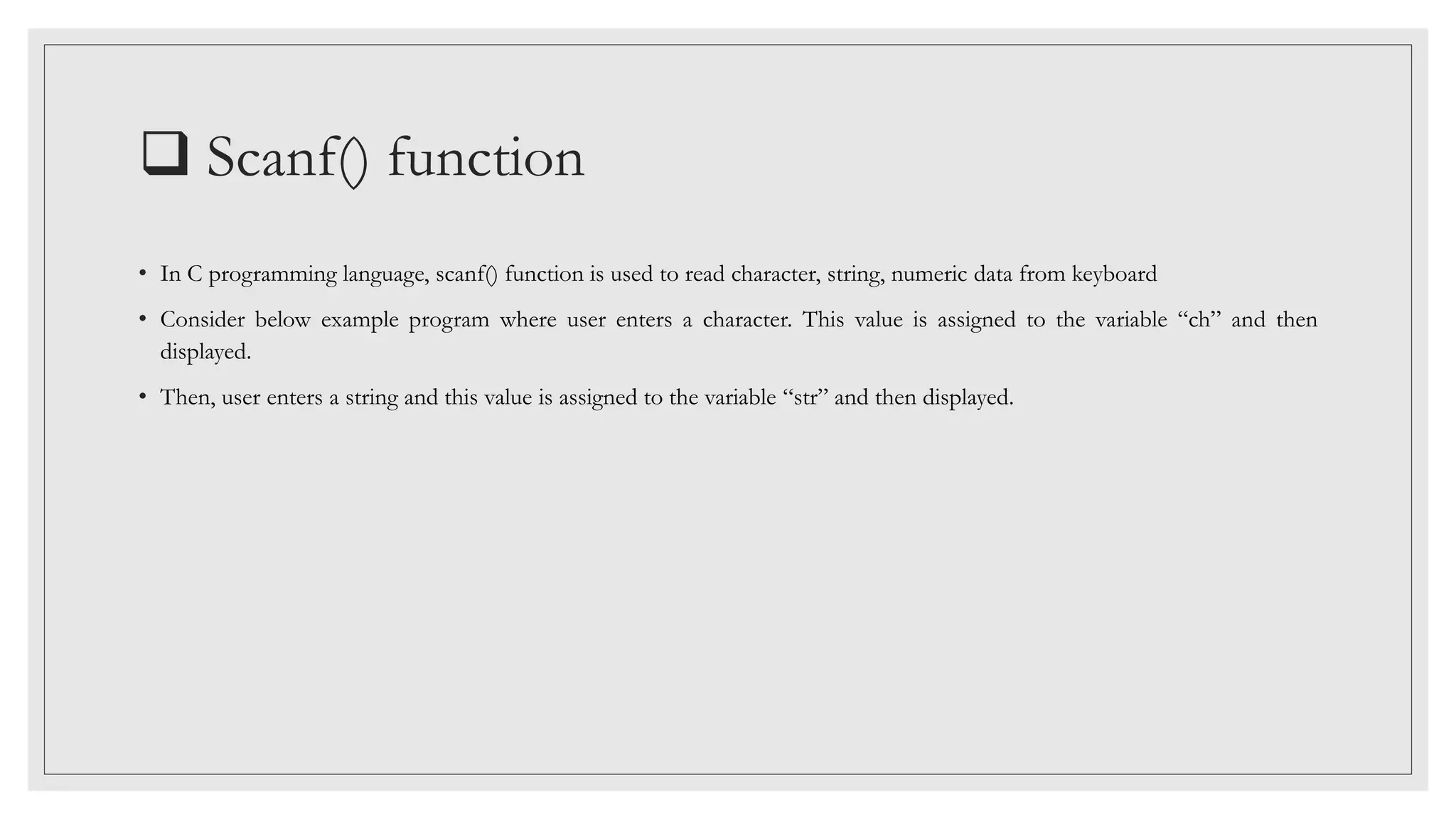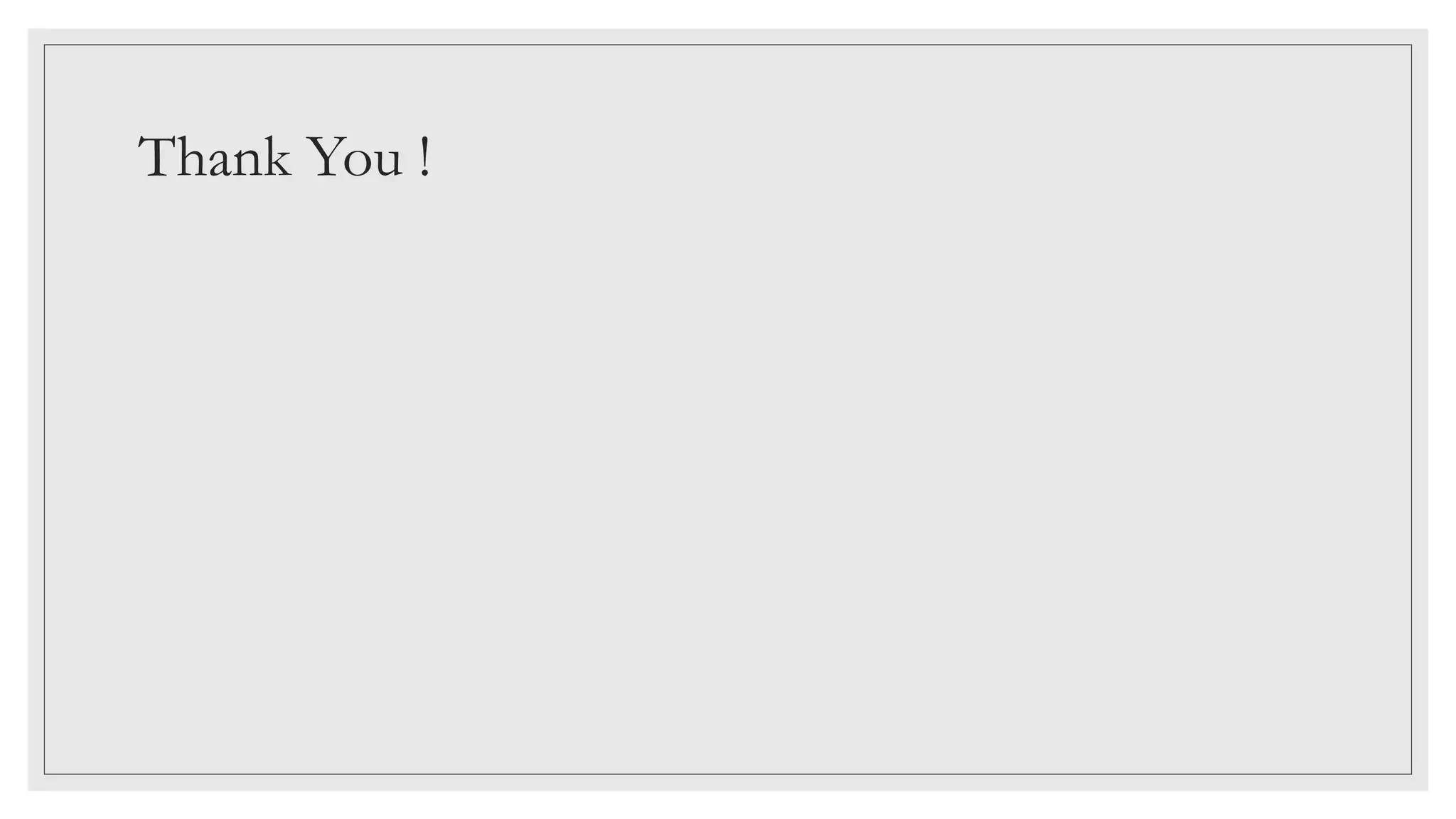The document provides an overview of arrays and strings in C programming, detailing concepts like two-dimensional arrays, arrays of strings, and multidimensional arrays. It covers console I/O operations such as reading and writing characters and strings, along with formatted input/output functions like printf() and scanf(). Additionally, it discusses the features of variable length arrays and their initialization methods.
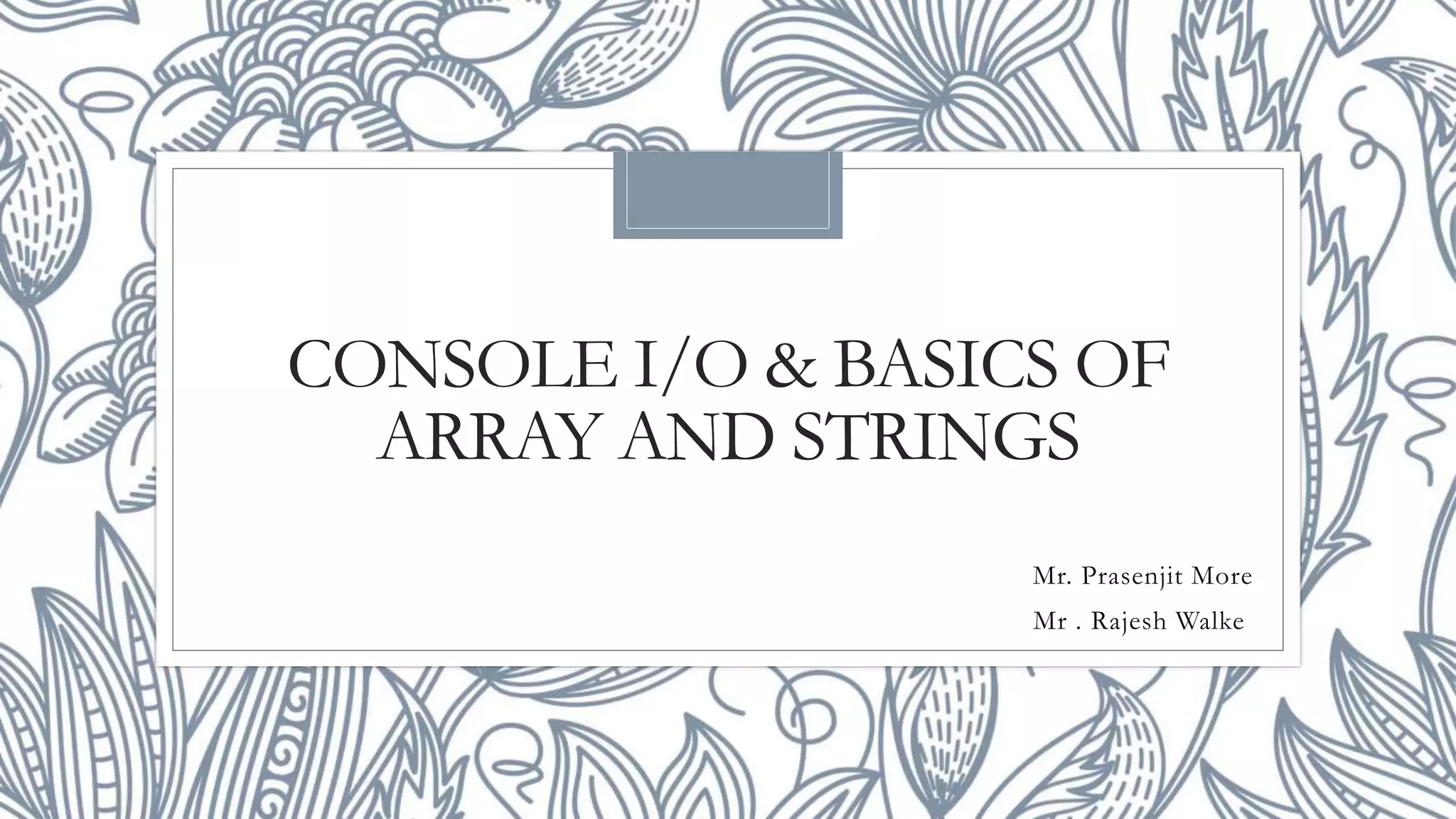
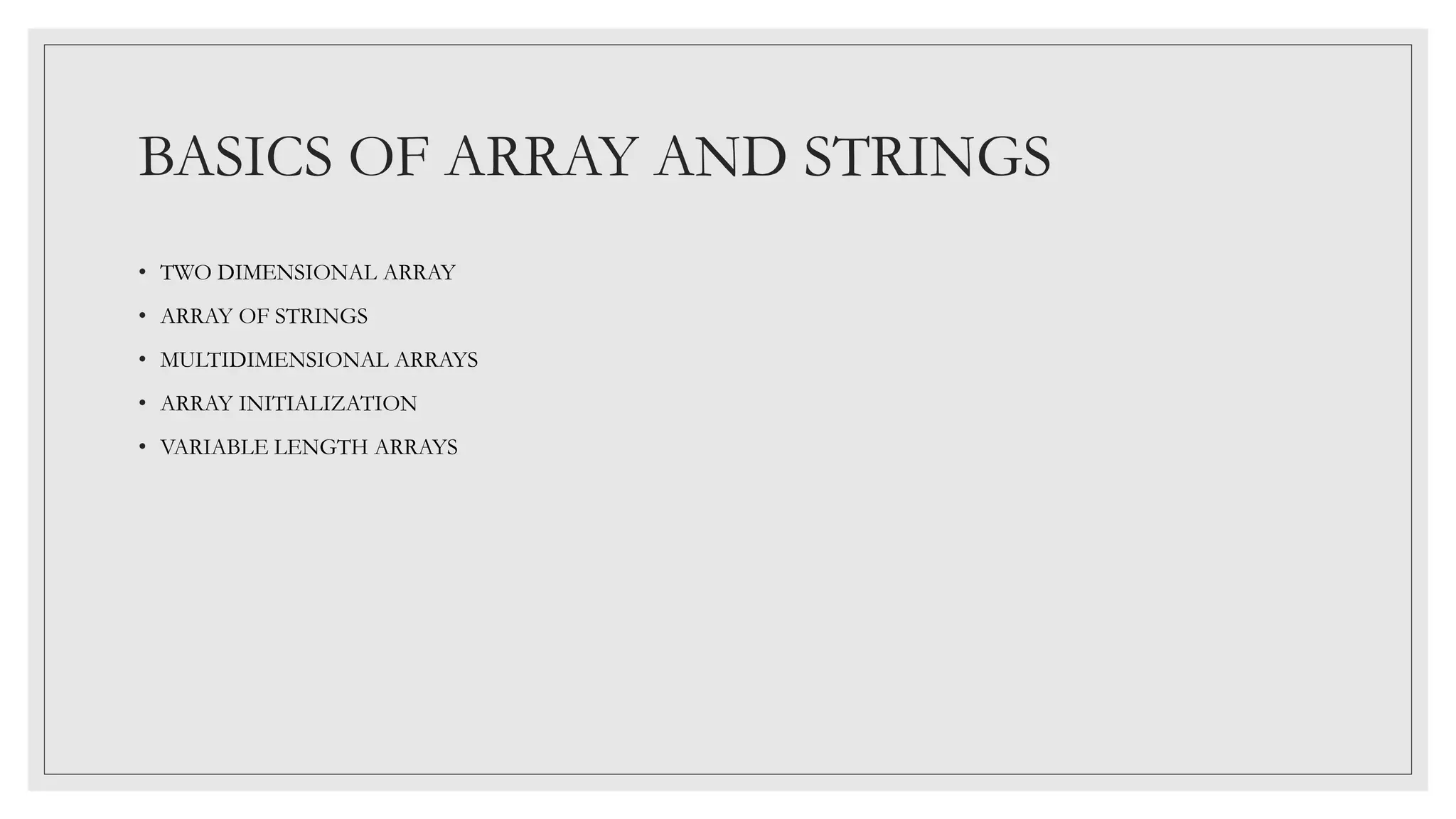
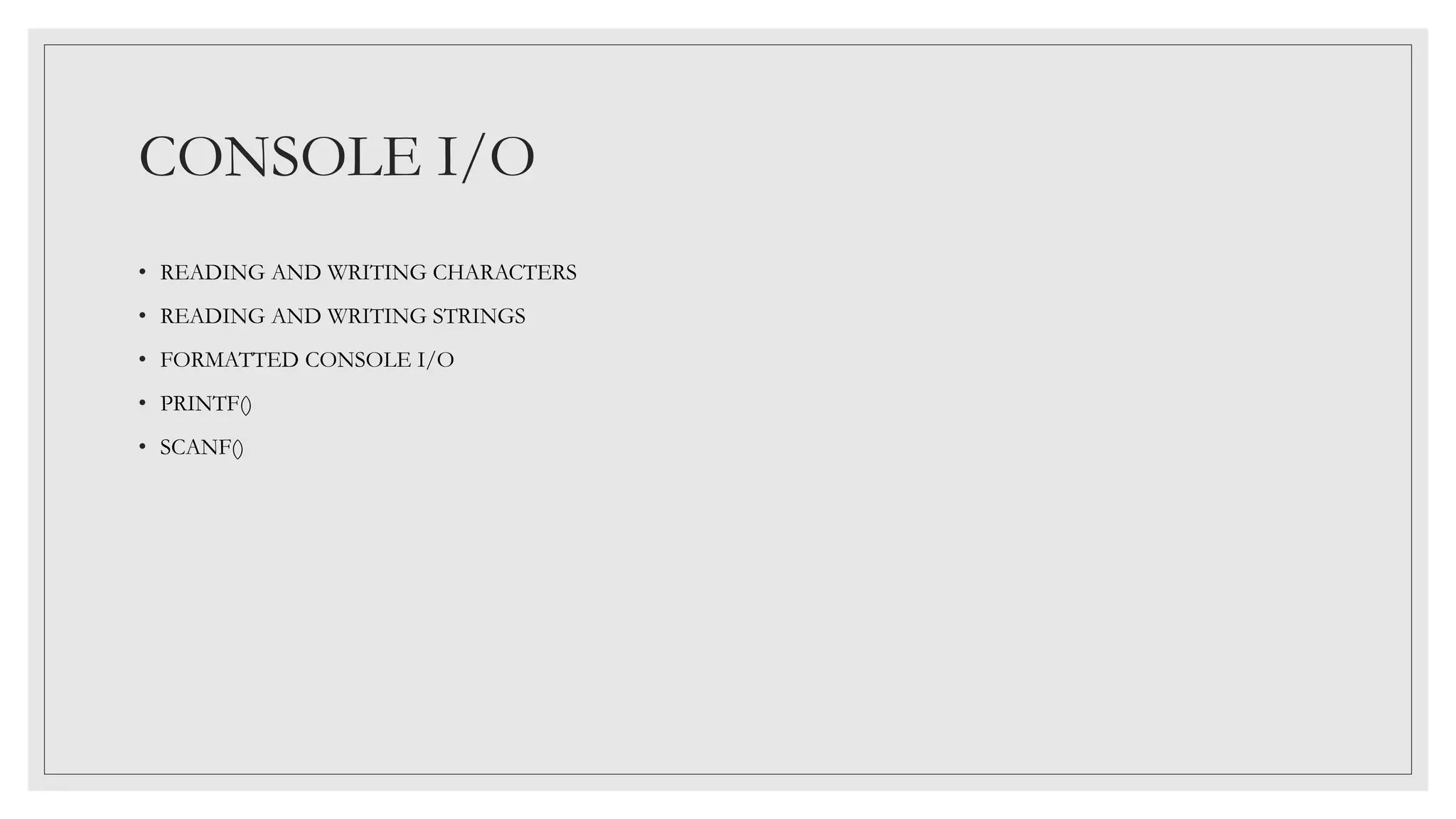
![ Two dimensional Array
• The two-dimensional array can be defined as an array of arrays. The 2D array is organized as matrices which can be
represented as the collection of rows and columns. However, 2D arrays are created to implement a relational database
lookalike data structure. It provides ease of holding the bulk of data at once which can be passed to any number of
functions wherever required.
• Syntax : data_type array_name[rows][columns];](https://image.slidesharecdn.com/2ndunitsummary-220511165159-0eba14f0/75/Console-I-o-basics-of-array-and-strings-pptx-4-2048.jpg)
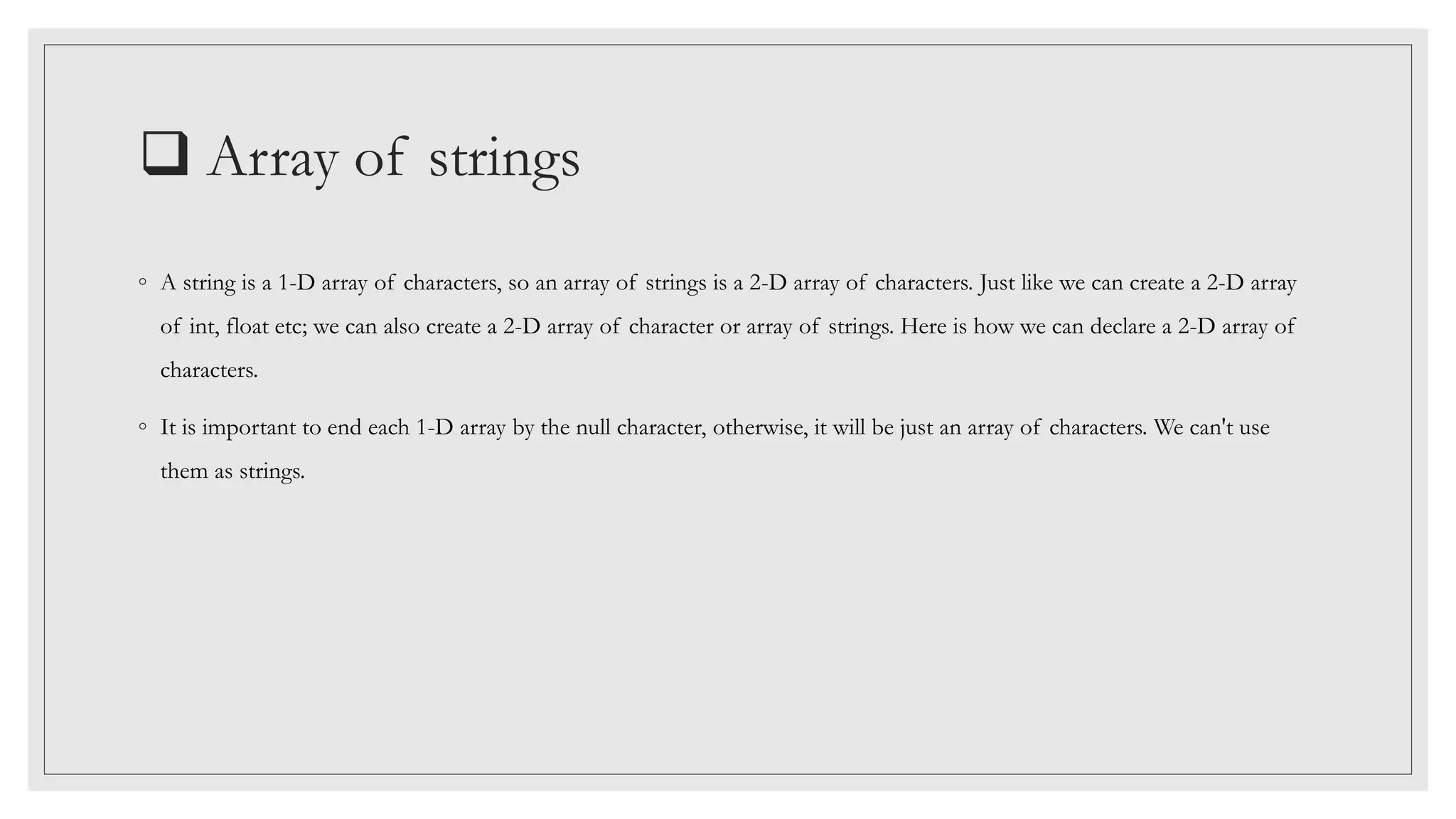
![ Multidimensional Arrays
• C programming language allows multidimensional arrays. Here is the general form of a multidimensional array declaration
−
• type name [size1], [size2], ………., [sizeN];
• For example, the following declaration creates a three dimensional integer array −
• int threedim [5],[10],[4];](https://image.slidesharecdn.com/2ndunitsummary-220511165159-0eba14f0/75/Console-I-o-basics-of-array-and-strings-pptx-6-2048.jpg)
